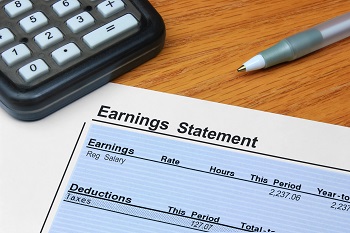Before you start shopping for homes in earnest, you should get a mortgage pre-approval from your lender. This is more than just a quick assessment of your financial situation based on your stated income. The bank actually verifies your financial information before they make their decision.
With meetings these days being conducted both virtually and in-person it has never been easier to coordinate a pre-approval with your mortgage specialist. The following is a brief list of the things that you’re likely to need for a successful mortgage pre-approval.
The Application Form

You’ll need to fill out an application to get pre-approved for a mortgage. In most cases, you can do this online ahead of time, or you may be able to get a paper form to fill out. No matter how you get it, by filling out the application before you meet with a lender, you’ll save a lot of time. The application will likely also have a list of other things that the bank may require as part of your application. While our list is fairly complete, requirements can vary from lender to lender.
Identification
The bank will need to know who you are, so be sure to bring some form of identification. A driver’s license or a passport should do the trick, though other forms of identification may be acceptable. The bank may need to make a copy of the identification or they may just visually confirm that you are who you say you are.
Past Tax Forms or Pay Stubs
You can’t simply tell the bank how much money you earn and expect them to loan you money. They need to see proof that you’ll be able to make your monthly payments by verifying that you’re gainfully employed. Most people can do this with a few recent pay stubs. Another way to show that you earn an income is through past tax forms.
Those who earn a steady income and have had the same job for several years tend to have an easy time getting approved for a mortgage. If you freelance, own your own business or have recently changed positions, the lender may require additional proof of income.
One thing to note is that bonuses and overtime pay can count when the lender makes a decision about how much money to lend. Lenders will typically request up to two years’ worth of bonus and overtime history to maximize your loan amount.
Proof of Assets
Qualifying for a mortgage isn’t only about being able to make the monthly payment. You also need to be able to make a down payment and pay for the closing costs. The bank wants to see evidence that you’ll be able to do this. Basically, you’ll need a bank statement showing that you have this money saved up. If you’ll be borrowing money from your RRSP, you’ll need to show proof that you’re able to do that.
In most cases, the assets that you have should be liquid assets, like cash savings. Assets that you’d have to sell, like a boat or jewellery, won’t count. Sell these things first to show that you have cash.
List of Debt Commitments
Your debts will also factor into the equation when the lender determines how much money they’ll loan you, so they need to see what your financial commitments look like in order to make those calculations. It would be best to consult a professional to analyze your debt commitments.
If you’re going to buy a new home, you need to get a mortgage pre-approval. While it’s sometimes possible to take care of everything online, going to a meeting gives you a chance to ask any questions you may have. It pays to gather everything you need beforehand to avoid any holdups.





